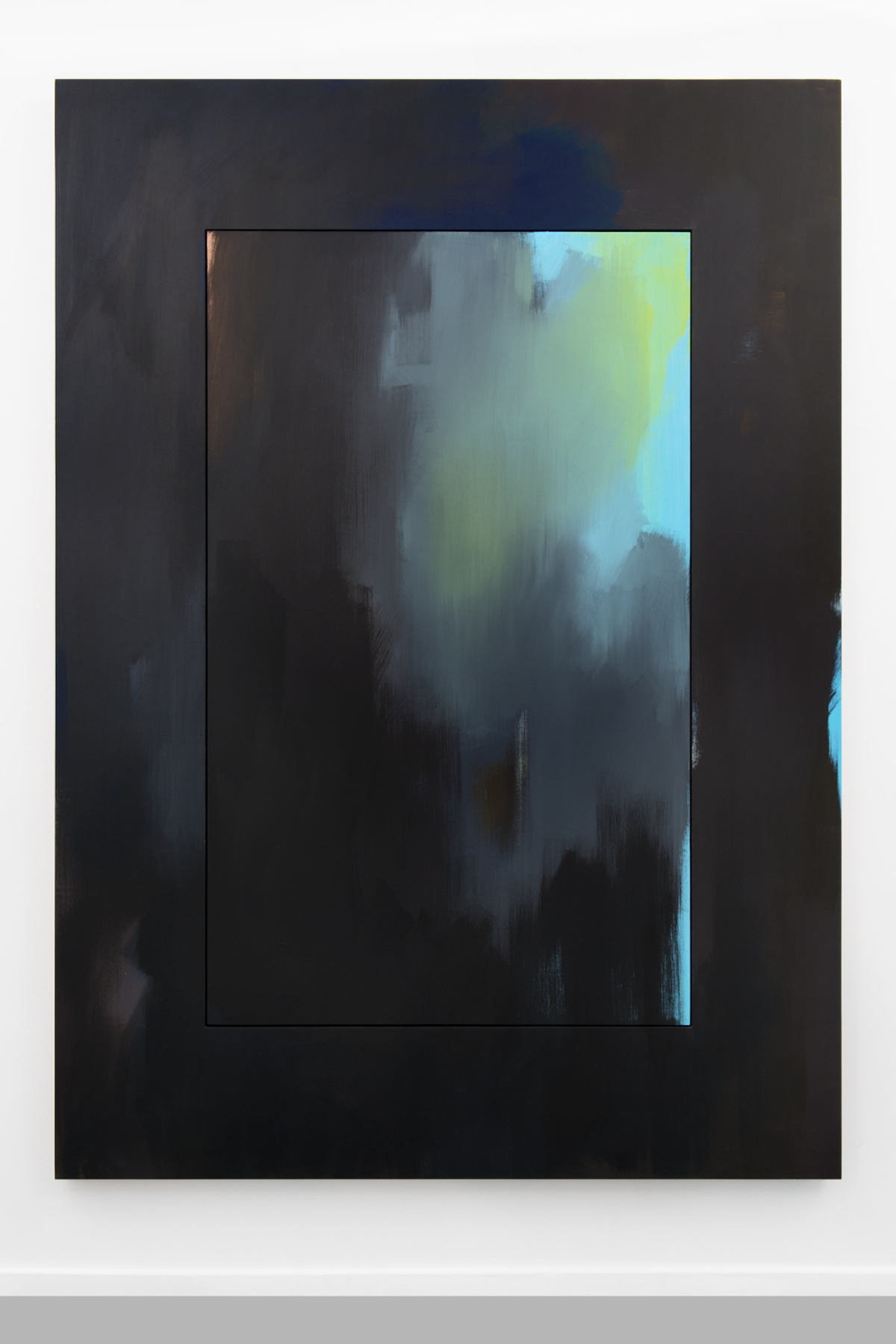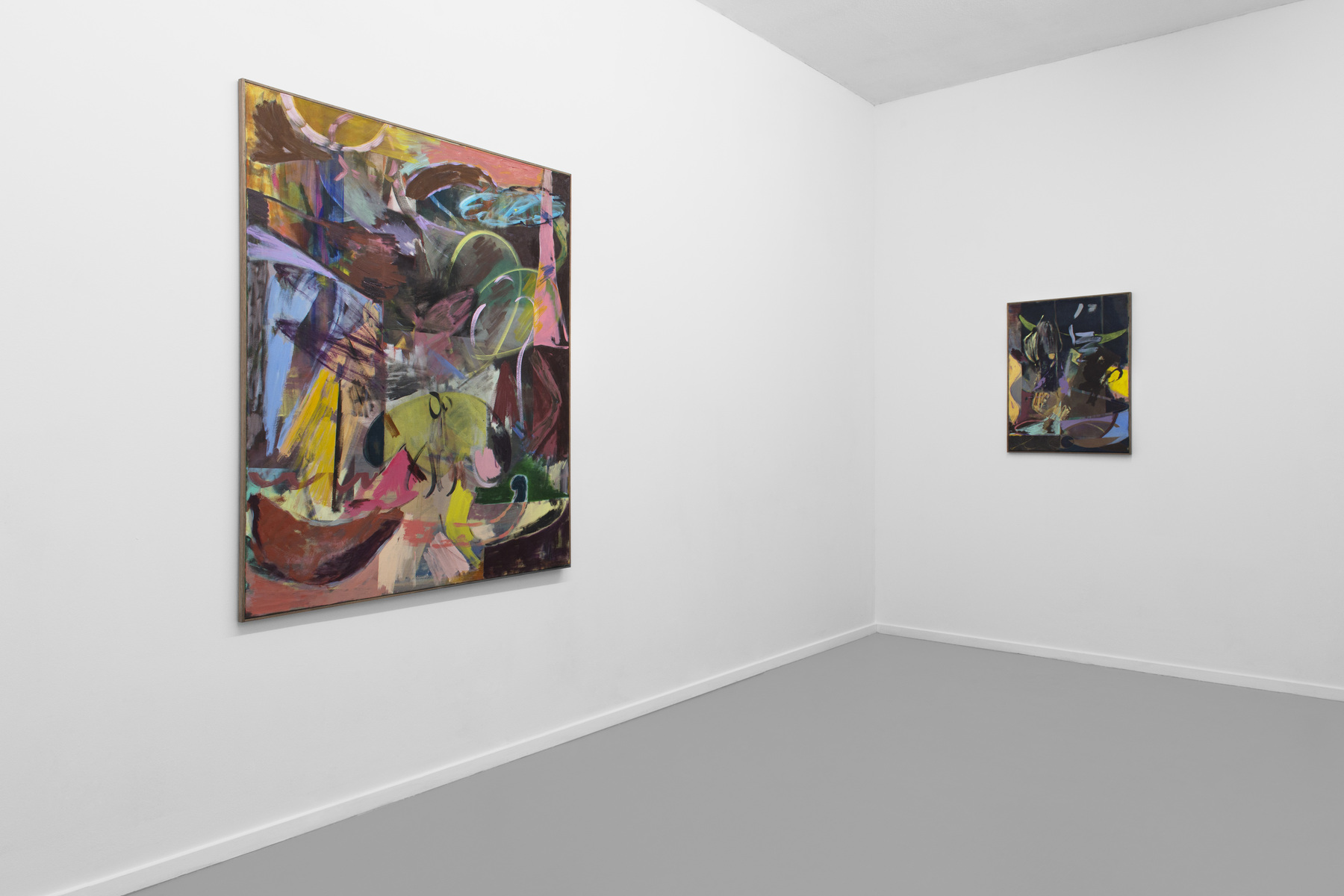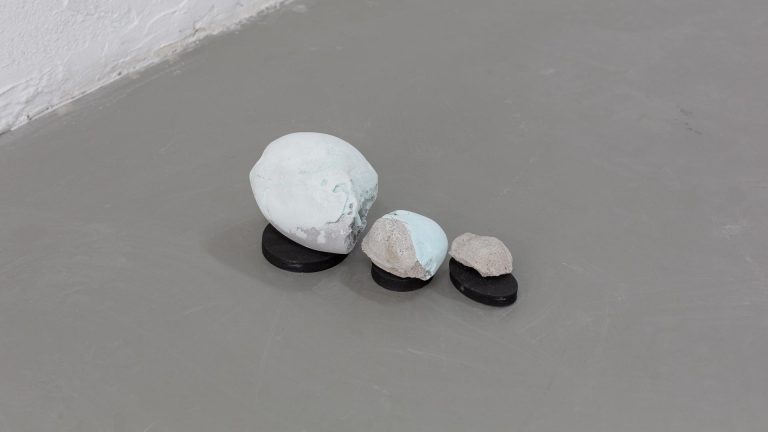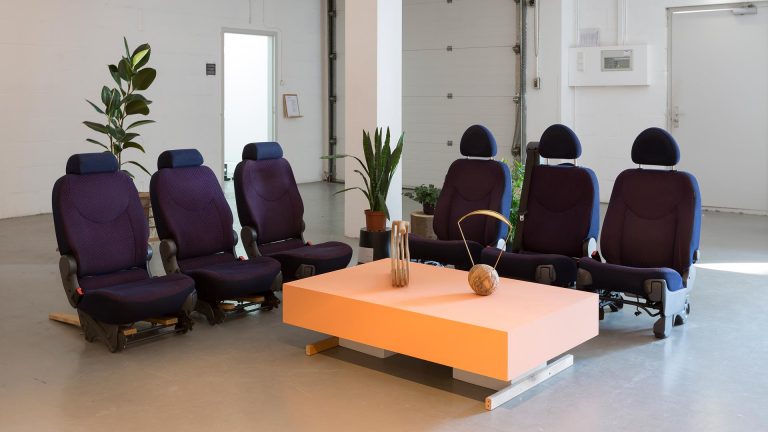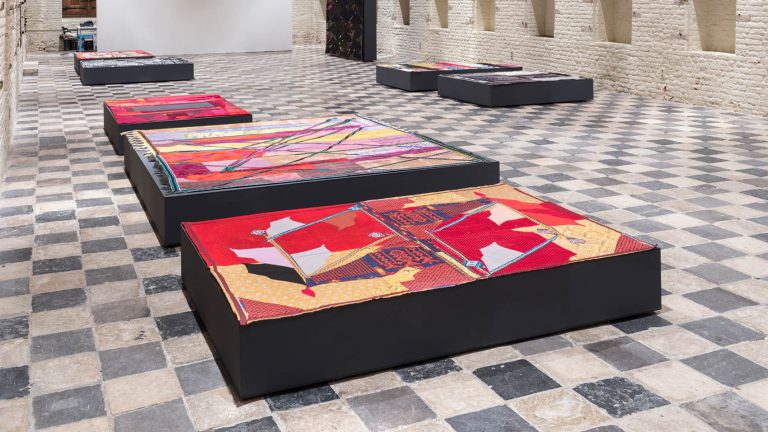Artists: Esther Tielemans and Jon Pilkington
Exhibition titles: Esther Tielemans: the past inside the present; Jon Pilkington: House Pictures
Venue: CINNNAMON, Rotterdam, The Netherlands
Date: January 14 – March 11, 2017
Photography: all images copyright and courtesy of the artists and CINNNAMON, Rotterdam
Esther Tielemans at CINNNAMON
Those who have followed Esther Tielemans (1976) over the years will know that she has tested the outer limits of painting. Beyond simply turning to a single medium and pallet, she seeks to comprehend the foundations of painting and its significance as an art form. Her transformation has been so remarkable that one might forget that Tielemans began as a landscape painter. After her graduation she picked up the trail where the great landscape painters Monet had last left their mark, carefully continuing their journey. This pilgrimage finally led to her monochrome artworks; so glossy and reflective that they place the viewer within the landscape. A new dimension was born, one that would leave Caspar David Friedrich scratching his head, full of self-satisfaction; man is placed directly within this new world, as its centerpoint, but even so, only takes form as a dubious contour.
Her sculptures then followed, used by Tielemans to construct new landscape decors. After the reflection of her epoxy monochromes, one could interpret this next step as a metaphorical mirror: does the ‘landscape’ even exist, or is the artificial human fabrication that we call landscape just as ‘real’ as the mise-en-scène that Tielemans so precisely constructs with her sculptures in the museum gallery? By deconstructing the land, reducing it to facets and colours, the artist tinkers with a deep collective memory of the landscape.
All roads, periods and styles meet in the series ‘the past inside the present’. Tielemans’ three-dimensional sculptures are reduced to the planar surface, however the matt depth applied in layers of paint and the ‘frame’ in which the panels are presented ensure that they by no means lose their spatial quality. The six monumental artworks hang next to each other like large windows, compelling the viewer to enter the new world created by the artist within the confined space. Although the epoxy is absent – you are not confronted with your own presence – the paintings draw you in. The viewer’s presence, albeit more subtle, still plays a fundamental role.
The colours that highlighted her landscapes years ago now lurk luxuriantly beyond the black painted contour. Esther Tielemans’ brushstrokes are liberated of reserved precision. They are more relaxed, vertical and above all else, radical. Deep, dark tones are applied over luminous colours, engaging the same theatrical spirit as her sculptures; as if you are witnessing an unparalleled natural phenomenon from within the wings. The geometric shapes appear to dissolve into the black. Disregarding hierarchy, the artist grips both sharp forms and an expressive painterly touch by the horns. The horizon has vanished, but it is still there: in the form of an Anthropocene world in which the earth and the atmosphere are intertwined, navigating between psychic abstractions demanding submission and the time honoured tradition of landscape painting.
-Heske ten Cate
Esther Tielemans (Helmond, 1976) lives and works in Amsterdam. Recent shows include: ‘Sol Le Witt – A Tribute’, GEM museum for contemporary art in the Hague (until April 9) and ‘Full Moon’ in Museum Voorlinden, Wassenaar (until March 19). Solo exhibitions include: Van Abbe Museum in Einhoven (2015 and 2008); Museum van Bommel van Dam, Venlo (2011) and Kunstverein Leverkusen (2010).
Tielemans won the Wolvencampprijs in 2014 and a basic prize in the Prix de Rome in 2005. Her work is represented in numerous (public) collections, a.o. Van Abbe Museum, Eindhoven /Stedelijk Museum, Schiedam / Fries Museum, Leeuwarden / Museum Voorlinden, Wassenaar / Museum van Bommel van Dam, Venlo /SCHUNCK, Heerlen.
Jon Pilkington at CINNNAMON
At first glance appearing cheerful and seemingly swi6ly constructed, pain9ngs by Bri9sh ar9st Jon Pilkington belie their complex crea9on. The artworks are a precise balancing act between the free hand and the rigid use of line and composi9on. Their basis is almost always figura9ve, the subject maDer derived directly from real life. A jug, a vase, a window frame, a piece of fruit, table or chair: the domes9city that surrounds us daily serves as the star9ng point from which a first outline is created. Thus begins the ar9st’s complicated and demanding endeavour. Layer by layer, sec9on by sec9on, abstrac9on sets in, con9nuing un9l the original is abandoned and spa9ality comes to exist; a place holding greater universal significance rather than a single object. The repain9ng of successively smaller areas transforms a vase of flowers into a space that can be traversed in thought. The ar9st explains: “There are mo9fs in the work that recur painted over and over un9l the mo9f loses all connec9on with the origin and plays with authen9city and crea9ng synthe9c highly contrived images. Collage plays a big part, but I don’t think they are collage pain9ngs. They are all so close; it may be one group of drawings that have influenced a series of works.”
The horizontal line that reappears in each work is worthy of note; some9mes occurring at the boDom of the pain9ng, some9mes placed more tradi9onally, just below the centre. These lines mislead the eye for a moment, as the eye assumes that the interplay of the lines is an actual game, given their carefree and playful nature. In reality the pain9ngs are more like a ritual; a manic experiment in which the same paDerns are repeated and evaluated, again and again. Much like Esther Tielemans, Jon Pilkington aDempts to decode the basic conven9ons of pain9ng; analysing the major concerns of composi9on, color and shape. “Form is the most important. Composi9onally, the fragments within each work that separate decisions and cover the history.”
The use of colour is remarkably sweet and warm, but by no means gentle or tacky; a result of the ar9st using his atelier floor as a paleDe, mixing the colours directly upon the surface. Sand, dust and dirt mix in with the pastel colours and leave a somewhat foul undertone behind in the resul9ng colour layers.
A delighSul failure can thus be a valuable stroke of luck, permiDed and recognised by the ar9st, by looking aDen9vely, looking again, taking distance and looking once more. This open eye and alertness for the unpredictable makes Pilkington a convincing ar9st. The essence of Jon Pilkington’s work lies within the search leading to the perfect composi9on.
-Heske ten Cate
Jon Pilkington (VK, 1990) woont en werkt in Londen. Pilkington studeerde aan de Chelsea College of Art & Design (Master of Fine Art – Dis9nc9on, 2012 – 2013). Tentoonstellingen (selec9e): ‘Pain9ngs should be sisters not twins… like eyebrows’, Neochrome, Turijn (solo, 2016) / ‘True Love Over Physics’, COMA, Sydney (2016) / ’The 9es that bind’, David Achenbach Projects, Wuppertal / ‘I AM A GOLDEN GOD’, Fiebach Minninger, gecureerd door Henning Strassburger (2016) / ‘BuDerfingers’ 247365, New York (2016, solo).









